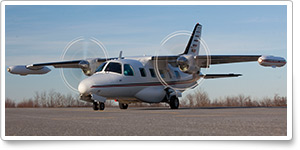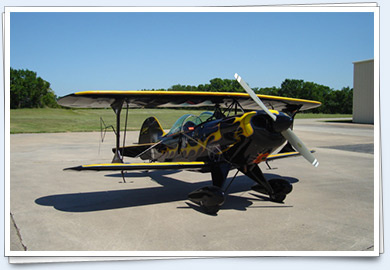Nov. 23, 2012, issue of 'AOPA ePilot: Flight Training Edition' weekly newsletter
| ||||||
| A prime directive |
| |||||
Training TipsA prime directive
Procedures for cold-weather engine starts vary by make and model—but how well the pilot understands the details of starting technique often determines who flies and who only tries.
For example, priming a carbureted engine may seem like a simple task, but the right touch will deliver results that let you get on with your session.
Why is priming key in the cold?
Chapter 6 of the Pilot's Handbook of Aeronautical Knowledge explains that “during cold weather, when engines are difficult to start, the fuel primer helps because there is not enough heat available to vaporize the fuel in the carburetor.”
That’s the key operating principle. But what’s so touchy about start-ups that a pilot’s priming know-how can make such a big difference?
The Air Safety Institute’s Safety Advisor on engine operations addresses that question: “On carbureted engines, cold starts are arguably the most difficult and provide a test of the pilot’s understanding of aircraft systems,” it says. “To start a cold engine, add extra fuel by priming. This puts fuel directly into one or more cylinders (via the intake manifold). Refer to the aircraft’s POH (pilots operating handbook) for the correct priming technique. Do not pump the throttle, as this will simply force raw fuel (which doesn’t vaporize as easily in cold weather) into the intake system, possibly causing an engine fire.”
Don’t rush when applying your priming strokes. Often you can hear the faint hissing noise of the primer doing its work.
As noted, how much to prime is a matter of a specific make and model’s recommended procedures. If a range of priming strokes to apply is published for your aircraft, keep in mind that the colder the temperature, the more you may have to prime.
Up and running? Don’t move on to the next checklist item without making sure that the primer is locked securely in place. Should an unsecured primer work loose, or be left partly extended, your trainer’s engine might be running excessively rich. That condition might leave your aircraft unable to deliver maximum power when needed. Flight Training NewsAviation apps you can’t live withoutePilot Flight Training Edition Editor Benét J. Wilson did a poll on the AOPA Facebook page asking members to name one—and only one—iPhone/iPad/Android aviation-related app they could not live without and why. Making the five were WingX Pro 7, ForeFlight Mobile, Naviator, CloudAhoy, and GoodReader. Read more >> Airwolf Aviation Services wins FAA approval for flight schoolGreenville, S.C.-based flight school Airwolf Aviation Services has been approved by the FAA as the only public Part 141 certified flight school in the upstate. “The accreditation recognizes the excellence of Airwolf’s training program and the quality of graduates they produce,” said Adam Lockamy, assistant chief flight instructor of the school. CABA awards $6,000 in aviation scholarshipsThe Colorado Aviation Business Association used an event at the Wings Over the Rockies Air & Space Museum to award $6,000 in scholarships. The scholarships went to three recipients. Joseph Muwala is a student at Emily Griffith Technical College in the aircraft maintenance program and will become an aircraft maintenance professional. Durga Niroula is in the eleventh grade at Aurora West College Preparatory Academy and plans to pursue a career as an airline pilot. The third scholarship winner, Ryan O’Rear, will use the funds to pursue flight training. O’Rear is a student in the Department of Aviation & Aerospace Science at Metropolitan State University of Denver. Wise up to iceAircraft can typically fly, with little to no difficulty, in rainy conditions. However, new limiting factors, like temperature and the need to avoid icing, start to have a greater effect on a flight's safety. Do you know what to look for in these conditions? Learn more by taking the Air Safety Institute’s WeatherWise: Precipitation and Icing online course. Dual instruction is always safer, right?Now that the accident numbers from 2010 are on hand, we have the chance to check back on some of the more surprising details that emerged from our first close look at instructional accidents nearly two years ago. Sure enough, those same patterns came up again in the next year’s data—and the things that have changed also brought those patterns into sharper focus. Read more >> Training ResourcesIt’s checkride time! Are you ready? Be confident in the knowledge that your CFI wouldn’t sign you off unless he or she thought you were ready. But if you’d like some additional tips for this important day, see the frequently asked questions on the Flight Training website. Did you know that student pilots who join AOPA are three times more likely to complete their flight training? Membership includes unlimited access to aviation information by phone (800/USA-AOPA, weekdays from 8:30 a.m. to 6 p.m. Eastern time) or from Flight Training Online or AOPA Online. If you’re not already a member, join today and get the pilot’s edge. Login information is available online. AOPA Live This Week: GA safety, flying the BD-5J MicrojetAOPA Live This Week reports from Washington, D.C.: The NTSB includes general aviation safety on its top 10 “Most Wanted List,” AOPA flies the BD-5J Microjet featured in a James Bond film, and we salute Piper on its seventy-fifth anniversary. Watch AOPA Live® >> Career PilotPiper, FIT launch aviation career alliancePiper Aircraft Inc. and the Florida Institute of Technology have launched a Piper Aviation Career Alliance. The partnership will educate and provide enhanced vocational opportunities for graduates from FIT’s aviation program, as well as graduates from other programs at the school. Piper President and CEO Simon Caldecott and Ken Stackpoole, vice president of aviation programs and dean of FIT’s College of Aeronautics, announced the program Nov. 10 during Piper’s seventy-fifth anniversary celebration at its headquarters and factory in Vero Beach, Fla. Read more >> ‘Flight Training’ releases 2013 college aviation directoryThe 2013 Flight Training College Aviation Directory has a comprehensive list of colleges and universities in the United States that offer an associate’s, bachelor’s, or master’s degree in an aviation field. In some cases, maintenance programs are listed that lead to an FAA certificate, but no degree. The special section shows which type of degree is offered, and in which discipline(s). Read more >> United, Continental pilots to vote on new joint contractThe Air Line Pilots Association (ALPA) master executive councils at United Airlines and Continental have agreed to forward a new joint contract to their members for a vote, reports Crain’s Chicago Business . The deal allows parent United Continental Holdings to integrate flight crews at United Airlines, a key milestone for the merged company. Embry-Riddle, airlines study projected pilot shortageRepresentatives from 14 major and regional U.S. airlines joined staff and faculty at Embry-Riddle Aeronautical University to discuss a pending professional pilot shortage facing the industry during the Pilot Supply Summit at the Daytona Beach, Fla., campus. The summit was called to develop ways to avert an impending shortage of qualified pilots. Recent reports, including one by Boeing, forecast nearly 460,000 pilots and more than 600,000 aircraft maintenance technicians will be needed globally during the next 20 years. Plane SpotterSpeeding bullet: Mitsubishi MU-2 Training ProductsSporty’s flight tests iPad MiniThe team at Sporty’s received the iPad Mini and put it through its paces. Sporty’s loaded it up with popular aviation apps, including ForeFlight Mobile, Garmin Pilot, and WingX Pro. “We were immediately impressed with the overall build-quality of the iPad Mini, and it feels as solid and well-constructed as the larger iPad models,” Sporty’s wrote. The smaller size of the tablet means less weight "to lug around in your flight bag and allows for more mounting options than were previously available with the regular iPad.” Cessna, King Schools offer sport/private courseCessna has worked with King Schools to offer a scenario-based flight training course. The Web-based course is for the pilot who is training in either a technically advanced, full-glass-cockpit airplane, or in an airplane with analog gauges. The training includes videos and full-motion diagrams of the course material, plus a complete FAA knowledge exam review program—and it’s available anywhere with Internet access.
Note: Products listed have not been evaluated by ePilot editors unless otherwise noted. AOPA assumes no responsibility for products or services listed or for claims or actions by manufacturers or vendors. Member BenefitsThe name gameBeing added to a friend’s policy as a “named pilot” is a great thing. In fact, most of us wish we had more of these kinds of friends. So what does it mean to be a named pilot? Simply put, you have been specifically approved by the underwriter insuring your friend’s aircraft to fly that person’s airplane without voiding the owner’s coverage. There may be some additional requirements you need to follow, such as a checkout with a CFI or a few hours of dual logged in the make and model, before you are fully cleared. Read more >> BlogsPhoto of the day: Fall foliage flightFlying is fun no matter what the season, but there’s something especially satisfying about getting a bird’s-eye view of autumn colors in their fleeting glory, writes Flight Training Technical Editor Jill Tallman. Read more >> Because this is what Airplanistas doDan Pimentel, editor of the Airplanista blog, discusses how we all must remain loyal to the “First Unwritten Rule of being an Aviator: Pilots help other pilots, all the time, without asking why, because that’s what we Airplanistas do. I’m talking about the small things, the no-brainers that we aviators do for our aviation family members.” Read more >> AOPA Career OpportunitiesEver dream of turning your passion for aviation into a career? We’re looking for an events coordinator; AOPA eastern regional manager; marketing coordinator; .NET applications developer; production assistant–Web; member services representative; manager, AOPA Flying Club Network; Web developer (eMedia); major gifts officer; and Web graphic designer. To learn more about other AOPA career opportunities, visit AOPA Online. Community
AVIATION EVENTS & WEATHER
| ||||||||||||||||||||||||||||||||||||




 It’s a chilly morning out on the flight line. Whether it’s cold enough to require an engine preheat or not, you may have noticed that not everyone who got out there for an early-morning practice session has managed to start up and taxi away without difficulty.
It’s a chilly morning out on the flight line. Whether it’s cold enough to require an engine preheat or not, you may have noticed that not everyone who got out there for an early-morning practice session has managed to start up and taxi away without difficulty.




